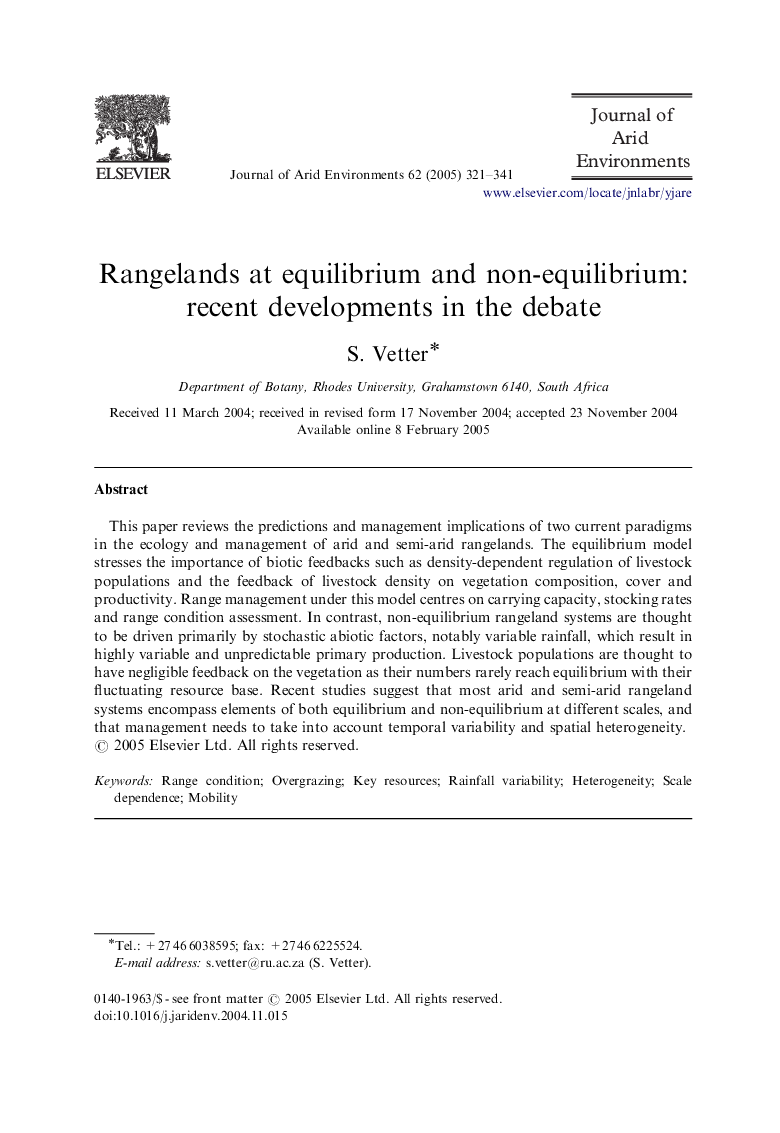| Article ID | Journal | Published Year | Pages | File Type |
|---|---|---|---|---|
| 9447835 | Journal of Arid Environments | 2005 | 21 Pages |
Abstract
This paper reviews the predictions and management implications of two current paradigms in the ecology and management of arid and semi-arid rangelands. The equilibrium model stresses the importance of biotic feedbacks such as density-dependent regulation of livestock populations and the feedback of livestock density on vegetation composition, cover and productivity. Range management under this model centres on carrying capacity, stocking rates and range condition assessment. In contrast, non-equilibrium rangeland systems are thought to be driven primarily by stochastic abiotic factors, notably variable rainfall, which result in highly variable and unpredictable primary production. Livestock populations are thought to have negligible feedback on the vegetation as their numbers rarely reach equilibrium with their fluctuating resource base. Recent studies suggest that most arid and semi-arid rangeland systems encompass elements of both equilibrium and non-equilibrium at different scales, and that management needs to take into account temporal variability and spatial heterogeneity.
Related Topics
Physical Sciences and Engineering
Earth and Planetary Sciences
Earth-Surface Processes
Authors
S. Vetter,
